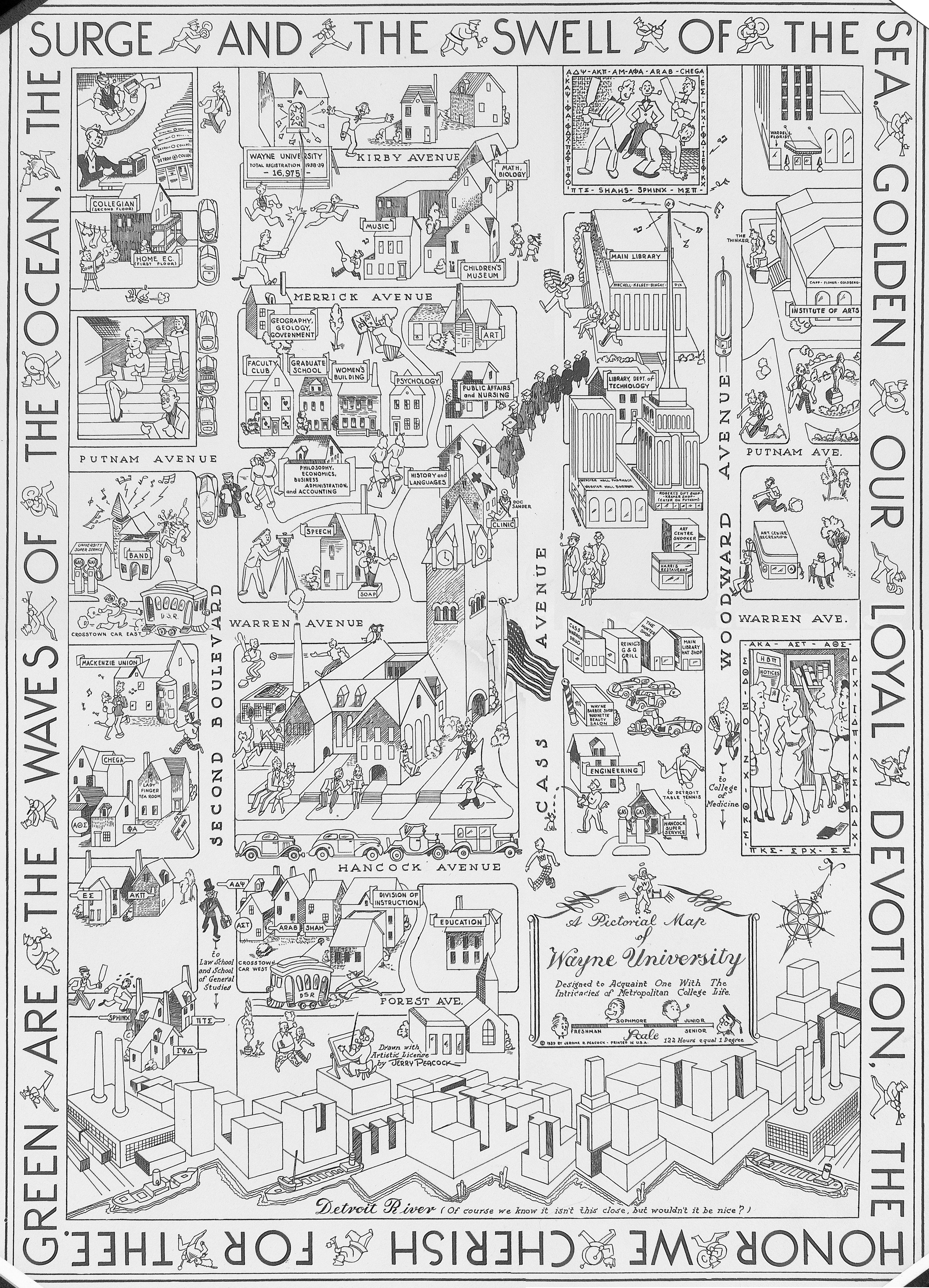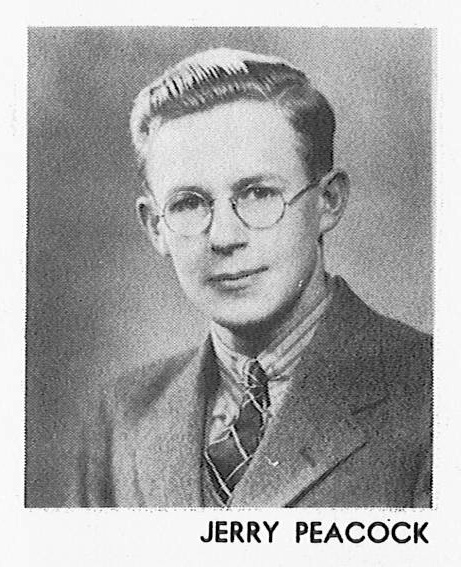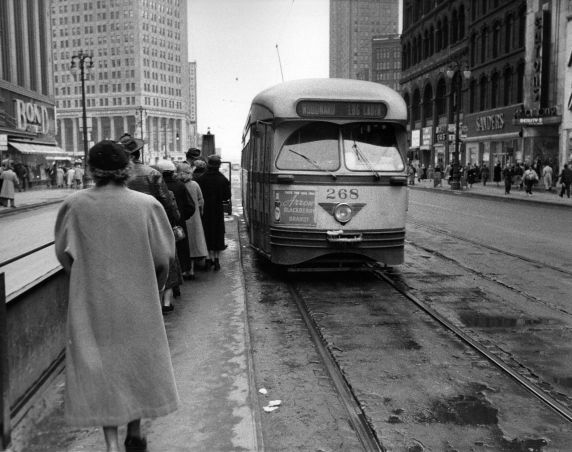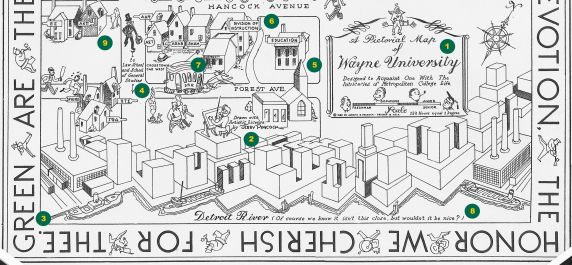Collection Focus: Wayne University Illustrated Map, 1939 - Part 1
This is the first in a series of four blog posts annotating Jerry Peacock's 1939 cartoon map of the Wayne University campus. View the entire map here.
In 1939, Wayne University undergraduate and newspaper cartoonist Jerome R. Peacock drew ("with artistic license") a large-scale, heavily-detailed cartoon map of his school's campus. Peacock might have planned to include it in that year's yearbook, but the 1939 Wayne yearbook was cancelled before publication. By the time the map appeared in the 1942 yearbook, it was already somewhat out of date.
 Wayne State University now dates its origin back to the founding of the Detroit Medical College in 1868. Jerry Peacock drew his map 71 years after that, and 74 years have passed since then -- so we can see this as an illustration of Wayne halfway between its creation and its present existence. In 1939 Wayne University was a young university: the College of the City of Detroit wasn't renamed "Wayne University" until 1934. Before that time it was still a collection of schools including the Detroit Junior College, the Detroit Teachers College, the Detroit College of Medicine and Surgery, and the Detroit City Law School.
Wayne State University now dates its origin back to the founding of the Detroit Medical College in 1868. Jerry Peacock drew his map 71 years after that, and 74 years have passed since then -- so we can see this as an illustration of Wayne halfway between its creation and its present existence. In 1939 Wayne University was a young university: the College of the City of Detroit wasn't renamed "Wayne University" until 1934. Before that time it was still a collection of schools including the Detroit Junior College, the Detroit Teachers College, the Detroit College of Medicine and Surgery, and the Detroit City Law School.
In the next weeks, I'll give the history and context of the buildings and people on the map, and explain how they relate to the Wayne State University of today. You can download and view the complete map. This week's article will examine the southern quarter of the map, from the Detroit River up to Hancock Avenue.
1. The legend on the right side of this section of the map illustrates the rapid maturation of a Wayne undergraduate, and features an illustration of an angelic football player. Although the early Wayne students were enthusiastic supporters of their football team, it didn't have an illustrious winning record in its first years. The Homecoming game was traditionally played against Michigan State University, and Wayne lost its first three Homecoming games badly, with scores of 0-27, 0-19, and 6-34.
 2. Jerry Peacock was a prolific illustrator. His cartoons appeared on the pages of the Collegian, the Wayne University student newspaper, from 1938 until his graduation in 1940. He also provided most of the illustration for the 1940 Wayne yearbook. He can be spotted in group photos in the 1937 and 1938 yearbooks, and his 1940 graduation photo is shown at right. In the early 1940s Jerry became a sketch artist on the WWJ-TV program "Junior Jamboree."
2. Jerry Peacock was a prolific illustrator. His cartoons appeared on the pages of the Collegian, the Wayne University student newspaper, from 1938 until his graduation in 1940. He also provided most of the illustration for the 1940 Wayne yearbook. He can be spotted in group photos in the 1937 and 1938 yearbooks, and his 1940 graduation photo is shown at right. In the early 1940s Jerry became a sketch artist on the WWJ-TV program "Junior Jamboree."
Jerry was a member of the Gamma Phi Delta fraternity. The Gamma Phi Delta House is shown on Second Boulevard, just to the left of Jerry's self-portrait, and the two young men walking towards him may be a couple of his fraternity brothers.
3. Around the border of the map are written the words of the first verse of "Green and Gold," the fight song of Wayne University. The lyric is by Zelda Medvedov (later Zelda Landsman), who was a graduate of Central High School (CHS) and a student of the Detroit Teachers College (DTC) when that school joined the City College of Detroit (CCD). She submitted the song in a competition to write a football anthem for the CCD; green and gold were the colors of the Tartars, the team of the Detroit Junior College (DJC), and those colors and team name were retained by the new, merged colleges.
The second verse of "Green and Gold" is:
Green in the spring are the fruit trees,
and golden the fruit that they bear;
Green are our efforts and duties,
but golden the fruit of our care.
Other early Wayne songs included "Hymn to the University," "Tartar Men," "Win for Wayne," and "War March of the Tartars," which all appear in the 1946 pamphlet "Wayne University Songs."
4. As the map indicates, both the Law School and the School of General Studies were located south of Wayne's main campus. The Detroit City Law School was established in 1927 and granted its first degrees in 1928. At first its classes were held in CCD buildings, but in 1936 Dean Arthur Neef moved the Law School into the High School of Commerce, across the street from Cass Technical High School. This allowed the Law School to expand and improve. In 1943 the Law School returned to roomier quarters on the main campus.
The School of General Studies, also housed in the High School of Commerce, was an early experiment in Wayne's continuing effort to provide education to non-traditional students. Wayne University established this school in 1937 to accommodate part-time, non-matriculated, evening students. Any graduate of any high school could enroll in the School of General Studies. The students were physically and socially isolated from the rest of Wayne, however, and in 1950 the program was converted into a post-graduate program administered by the High School of Commerce.
5. Although the College of Education is represented on the map only by a small, nondescript building, it was one of the formative elements of Wayne University. The Detroit Board of Education first offered the Detroit Normal Training Class, a one-year teacher's course, beginning in 1881. This class was specifically created in order to produce well-prepared teachers for Detroit's public schools.
The Detroit Normal School differed from the other components of Wayne in that the majority of its students and faculty were women. In 1920 it was renamed the Detroit Teachers College and began to offer four-year degrees. When the component schools of the College of the City of Detroit were joined together as Wayne University, the Detroit Teachers College became the College of Education.
6. The Division of Instruction, located on Hancock Avenue west of Cass, was a division of the Detroit Board of Education, responsible for the development of curricula and the ongoing training of teachers. Until 1945, Wayne's College of Education was run by the Division of Instruction.
 7. In 1939, Wayne students commuting to their classes could ride the Detroit Street Railway streetcars. The crosstown streetcar stretched from the Rouge River to St. Jean St. The Woodward Avenue streetcar, meanwhile, ran from the State Fair Grounds to the Detroit River. The crosstown car discontinued service in 1947, and the Woodward car (shown at left) was retired in 1956.
7. In 1939, Wayne students commuting to their classes could ride the Detroit Street Railway streetcars. The crosstown streetcar stretched from the Rouge River to St. Jean St. The Woodward Avenue streetcar, meanwhile, ran from the State Fair Grounds to the Detroit River. The crosstown car discontinued service in 1947, and the Woodward car (shown at left) was retired in 1956.
The streetcar was important, like the buses that replaced it, because Wayne has always been a commuter school. The early campus was surrounded by apartments, houses, and other residences, but it had no dormitories. After World War II, rather than build dorms, the school began to acquire apartment buildings in the neighborhood and convert them to student housing. Even then, the great majority of the student body continued to live outside of the immediate area, and relied on public or private transportation to get to campus.
8. Jerry Peacock stretched the truth by drawing the Detroit River just a block south of campus. To early Wayne students, the river represented the nearest and quickest escape from city life. Wayne undergraduates held annual intramural sports competitions on Belle Isle (see picture at right), and as late as 1968, the school sponsored student getaways to Bob-Lo Island.
9. On Cass Avenue, between Hancock and Forest, you'll find a group of fraternities (Sphinx, Pi Tau Sigma, Gamma Phi Delta, Epsilon Sigma, Alpha Kappa Pi, Alpha Delta Phi, Alpha Sigma Tau, Arab, and Shah) and a single sorority (Alpha Sigma Tau). I'll be discussing the origins and fates of these organizations in upcoming weeks. In the meantime, notice the upperclassman pursuing the underclassman and brandishing a paddle.
In 1939, Wayne already had a long history of student hazing. Frightening levels of sophomore-on-freshman violence took place at the Detroit College of Medicine, and the annual hazing festivities often resulted in extensive damage to the medical school's facilities. In "A Place of Light: The History of Wayne State University," Wayne professor Leslie Hanawalt wrote:
The acme of student high jinks ... was the "Rush," a form of hazing that appeared in the college in the 1890s. Upon signal of their leader, the sophomores massed and attacked the freshmen, who swarmed out of classes and fought back. The object was to throw or drag an opponent down the stairs from the second floor, through the lobby, out the front door, across St. Antoine Street, and into a fountain, while juniors and seniors applauded. ... In 1906 the freshmen, caught in a lecture room when the sophomore yell sounded, tore out the seats to make room, bunched in a corner, and awaited the attack. ... Some faculty men and seniors tried intermittently to stop the "barbarous" brawl or remove it outdoors; but there was much sympathy, even among the faculty, for this traditional blow-off of animal spirits, and the Rush lasted till 1914, when it was replaced by organized class contests on Belle Isle.
The Belle Isle class contests continued when the College of Medicine became part of the CCD. Hazing was officially banned at Wayne in 1951.
Part 2 of this series discusses the territory between Hancock and Warren Avenues, including Old Main, the iconic home of Central High School and the Detroit Junior College. If you're interested in learning more about Wayne State's history, the best place to start is with Leslie Hanawalt's "A Place of Light," published in 1968. The University Archives are located in the Walter P. Reuther Library of Labor and Urban Affairs, and our Reading Room is open from 10 AM until 4 PM, Monday through Friday.
Alison Stankrauff is the Wayne State University Archivist.
| Attachment | (click to download) | |
|---|---|---|
| Wayne_University_Illustrated_Map_1939.jpg | 3.14 MB | |
| Wayne_University_Illustrated_Map_1939_Detail1.jpg | 1.88 MB | |
| Jerry_Peacock_YB.jpg | 113.9 KB |
- cwesterman's blog
- Login to post comments
- Printer-friendly version


 Reddit
Reddit Facebook
Facebook LinkedIn
LinkedIn